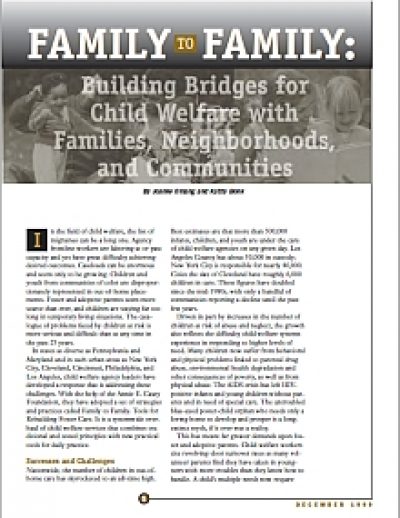Family Ties
Recruiting, training, and supporting foster and adoptive parents are the cornerstone of the Family to Family initiative.

This brief describes the changes made and challenges encountered by public child welfare agencies after switching to the values and principles outlined in Casey’s former Family to Family initiative. It shows the reader the difference between a traditional agency application versus a family-centered, neighborhood-based child welfare and foster care service system. It also provides insight into how the changes benefit the children.
Family to Family changes the traditional child welfare approach at every level. It overturns the assumption that the interests of birth parents and foster and adoptive parents are diametrically opposed. Birth parents are brought into a working relationship with foster parents where possible, while child welfare workers play more of a mediating and coordinating role as everyone is considered a member of the team for the child. Agency staff have to learn how to build bridges to make these partnerships work.